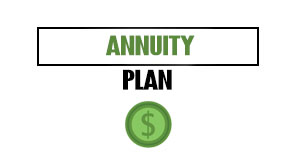Financial institutions across the country are offering competitive savings account rates, giving consumers opportunities to maximize their interest earnings regardless of location. With remote banking options expanding, savers now have access to high-yield accounts from anywhere in the United States.
The current interest rate environment has created favorable conditions for savers, with some online banks and credit unions offering annual percentage yields (APYs) significantly higher than the national average. These rates represent a marked improvement compared to the near-zero returns many traditional banks offered in recent years.
Digital Banking Drives Higher Yields
Online-only banks continue to lead the pack in offering the most attractive savings rates. Without the overhead costs of maintaining physical branch locations, these institutions can pass savings to customers in the form of higher interest rates and lower fees.
Many of these high-yield accounts feature:
- No monthly maintenance fees
- Low or no minimum balance requirements
- FDIC or NCUA insurance protection
- User-friendly mobile banking platforms
The best rates are typically found at online banks rather than traditional brick-and-mortar institutions,” notes financial analysts tracking the savings market. The difference can be substantial, often 10 to 15 times higher than what major national banks offer.
Regional Banks Enter the Competition
Regional banks have also stepped up their game, with many now offering competitive rates to attract deposits. These institutions frequently combine the benefits of physical locations with digital banking capabilities, appealing to customers who value both in-person service and strong returns.
Credit unions, which are member-owned financial cooperatives, represent another option for savers seeking higher yields. Many have expanded their field of membership criteria, making it easier for people across the country to join and access their competitive rates.
The democratization of banking means consumers are no longer limited by geography when seeking the best returns on their savings,” explains one banking industry expert. “This increased competition benefits savers everywhere.”
Rate Shopping Considerations
Financial advisors recommend looking beyond the headline rate when comparing savings accounts. Other factors that may impact the actual return include:
Account limitations can vary widely between institutions. Some high-yield accounts restrict the number of monthly withdrawals or transfers, while others may reduce the interest rate if the balance falls below a certain threshold.
Rate guarantees differ as well. Some banks offer promotional rates that expire after a few months, while others provide more stable returns. Reading the fine print helps savers avoid unexpected changes to their earning potential.
The Federal Reserve’s monetary policy decisions continue to influence the overall interest rate environment. Recent rate adjustments have created favorable conditions for savers, though these rates remain subject to change based on economic conditions.
For those with substantial savings, account insurance limits should be considered. The standard FDIC and NCUA insurance covers up to $250,000 per depositor, per institution. Individuals with balances exceeding this amount might need to spread funds across multiple banks to maintain full protection.
With inflation concerns persisting, finding the highest possible yield on savings has become increasingly important for consumers looking to preserve purchasing power. The current competitive landscape offers opportunities for savers to earn returns that better keep pace with rising prices.
As banking continues to evolve, consumers benefit from increased transparency and accessibility. Comparison tools and financial websites make it easier than ever to identify the most competitive savings rates available nationwide, regardless of where customers live.















